Similar Posts
____________________________________________________________
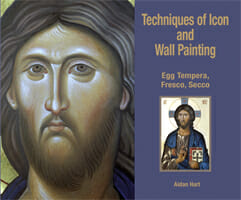 Editorial note: We have convinced Aidan Hart to post a chapter from his new book. “Techniques of Icon and Wall Painting” which is being hailed as the most comprehensive book to date on practicing the art of Iconography. At 450 pages, with 460 paintings, 150 drawings and covering everything from theology and design to gilding and varnishing, it is a prized possession for anyone interested in the traditional arts. The chapter being serialized over the next weeks is called “Designing Icons”. You will see why Archimandrate Vasileos of Iviron called this book the “Confessio of a man who epitomizes the liturgical beauty of the Orthodox Church”. More details about the book on Aidan’s website.
Editorial note: We have convinced Aidan Hart to post a chapter from his new book. “Techniques of Icon and Wall Painting” which is being hailed as the most comprehensive book to date on practicing the art of Iconography. At 450 pages, with 460 paintings, 150 drawings and covering everything from theology and design to gilding and varnishing, it is a prized possession for anyone interested in the traditional arts. The chapter being serialized over the next weeks is called “Designing Icons”. You will see why Archimandrate Vasileos of Iviron called this book the “Confessio of a man who epitomizes the liturgical beauty of the Orthodox Church”. More details about the book on Aidan’s website.
____________________________________________________________
This is part 3 of a series. Part 1, Part2 (In this section, Aidan give us gives us advice on designing icons that do not exist in tradition or are impossible to find.)
It may be impossible for you to find any icons of the saint. Perhaps they are obscure saints, or are well known but for some reason not recorded in icons. This is very often the case with early saints of the West, such as the early saints of Britain or Gaul. In this case, assuming you are experienced enough to attempt such a thing, you will need to design the very first icon of that saint. And for this more research is required. Having studied the saint’s life, you will need to become acquainted with the dress and even the hairstyles of the age, and if they were clerics, what tonsures were used at the time.
I have listed below a few of the key things you will need to investigate.
Vestments and tonsures
Garments/vestments
What sort of garments is the saint likely to have worn? Personally I don’t believe that it is true to the icon tradition to dress all saints in some standardized clothing, Byzantine or otherwise. An Irish bishop of the ninth century did not for example wear what was worn by a contemporary bishop of Constantinople.
A good source of information on the history of vestments is the New Advent Catholic Encyclopaedia (www.newadvent.org). Probably the best book printed on the history of church vestments is “Church Vestments: Their Origin and Development” by Herbert Norris (London, Dent and Sons, 1949). For early British saints a helpful reference book is The Liturgy and Ritual of the Celtic Church by F.E. Warren.[1]
Illuminated manuscripts and stone carvings contemporary to the saint are a good source of information. There are also reference books intended for costumers to the theatre. More rarely there are literary descriptions. The venerable Bede and other writers, for example, make it clear than the pallium – the rough equivalent of the eastern omorphorion – was not given to all bishops, as it came to be in the East, but only to certain bishops at the pope’s discretion.
If you know from your knowledge of ecclesiastical history that one regional church was greatly influenced by another, you can often assume that their ecclesiastical vestments were similar. In this case if you are unclear what vestments were worn by your saint, you can refer to this other better documented church.
One example of this concerns the vestments worn by Celtic clerics up to at least the early fifth century in Romanized areas of Britain, such as the present-day areas of south Wales and England. Since early Christianity came to Britain through the Roman empire, clerical vestments could well have been like those depicted in the mosaics of Ravenna, dating from the fifth to the sixth centuries. For this reason and just for the high standard of the works themselves, it is well worthwhile purchasing a book with illustrations of Ravenna mosaics.
Early Western clerical vestments
The vestments of the early Western Church were as follows, from the inside out in order:
- Alb. This ample white undergarment was invariably white, and is worn loose. Its origins seem to be in the long tunic worn by the Romans. Until about the ninth century this was the outer garment for deacons in western Europe outside of Rome and environs
- Dalmatic. So named because it was traditionally made of wool from Dalmatia, this had very full sleeves and was full-length. It often had two stripes running from shoulder to hem, derived from the clavi found on the old Roman tunic. Initially its use was only allowed by Roman clergy and those granted permission by the pope, but in the ninth century was almost universally used by bishops and deacons in western Europe. It was the outer garment for deacons and was worn under the chasuble by bishops. This garment can be seen in the sixth century mosaics at San Vitale, Ravenna, worn by Bishop Maximian under his chasuble, and as the outer garment by his attendant deacons.
This is the equivalent of the sticharion used in contemporary practice in the Orthodox Church where it is the undermost garment used by bishops and priests, when it is usually white or gold, and is the outermost garment of deacons and subdeacons, where it can be more decorated and may vary in colour according to the celebration of the day. It is also worn by servers (acolytes).
- Chasuble. This was a large circular or square vestment with a hole for the head and ran to just above the feet. This was derived from the Roman casula, which means little house. Interestingly, almost its oldest reference in literature is Muirchu’s late seventh century Life of St Patrick. Some sources say that in the very early centuries it was worn by all the ranks of the clergy, and only later by only priests and bishops. By the time of the mosaics of San Vitale in Ravenna the two deacons shown with Archbishop Maximus wear the dalmatic but not the chasuble. A distinguishing feature of this vestment, both for bishops and priests, seems to be that it had a line down the middle, another at right angles across the shoulders, and sometimes a third forming a V, parting to pass around the neck This feature may have been derived from the seams needed to turn a square woven cloth into a circular one.
- Pallium. This was a strip of cloth hung over the shoulders of some bishops, especially metropolitans or archbishops (fig. IMG_2579 copy 1.JPG). According to the Liber Pontificalis this article was introduced in the first half of the fourth century. It appears that the Pope of Rome was the only one who could wear it by right, but he could bestow it on certain bishops of his choice. For this reason, if an icon is to be historically accurate this pallium will not be included on all bishops per se. Its equivalent in the Eastern Church, but made somewhat wider, is the omorphorion, which by contrast was and still is worn by all bishops (fig. John ChrysostomA_35A_001 copy.jpg).
Tonsure and beard
There are variant monastic tonsures and wherever it can be ascertained it is important to depict the saint with the one they would have worn.
From some unknown time until around the seventh century Celtic monastics in Britain had a tonsure variously described as: “from ear to ear”; a crescent of hair shaved from the front of the head; and as Muirchu’s Life of St Patrickhas it, the “adze-head” tonsure. Scholars are not in agreement as to what this tonsure actually was, but it was probably either a strip cut from ear to ear over the skull, or all the hair cut forward from this line, this latter I think being the most likely
Western European tonsures were invariably all the head shaved except for a crown of hair – the so-called Roman tonsure.
Concerning beards, it seems that Eastern monks from early times have let their beards grow long. In western Europe there was no single tradition for the first centuries, but by the sixth century absence of beards or very minimal length is the norm (as in the icon of St Gerard). Canon 44 of the Fourth Council of Carthage, representing an earlier synodal decree of around 503 A.D., states that clerics ought not let their hair or beard grow freely. This does not imply a complete shave, but legislates against excessive length. In England for example under King Edgar in the mid tenth century we have a canon: “Let no man in holy orders conceal his tonsure, nor let himself be misshaven nor keep his beard for any time.”
In Celtic lands, however, some carved images show monks with beards, sometimes cloven. The life of the Irish St Columbanus (c. 540 – 615), written soon after his repose, tells us that the crowds who came to hear him preach in Bobbio, Italy, were moved at the sight of his long white hair and beard.
[1] First published 1881 by the Clarendon Press, Oxford, it has been reprinted, with editorial work by Jane Stevenson, by Boydell and Brewer Inc., 1987, for about £80 (ISBN 0851154735). It is also available as a CD-ROM, Scotpress/Scotdisc, 2007, through the bookseller Unicorn Ltd, Inc., U.S.A. for around £11 plus p&p.

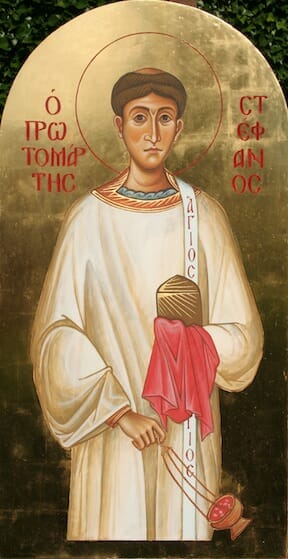

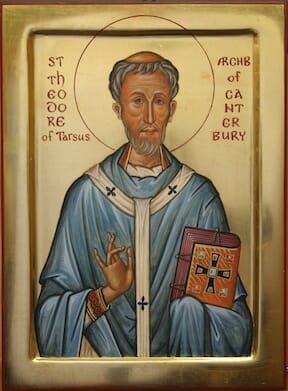
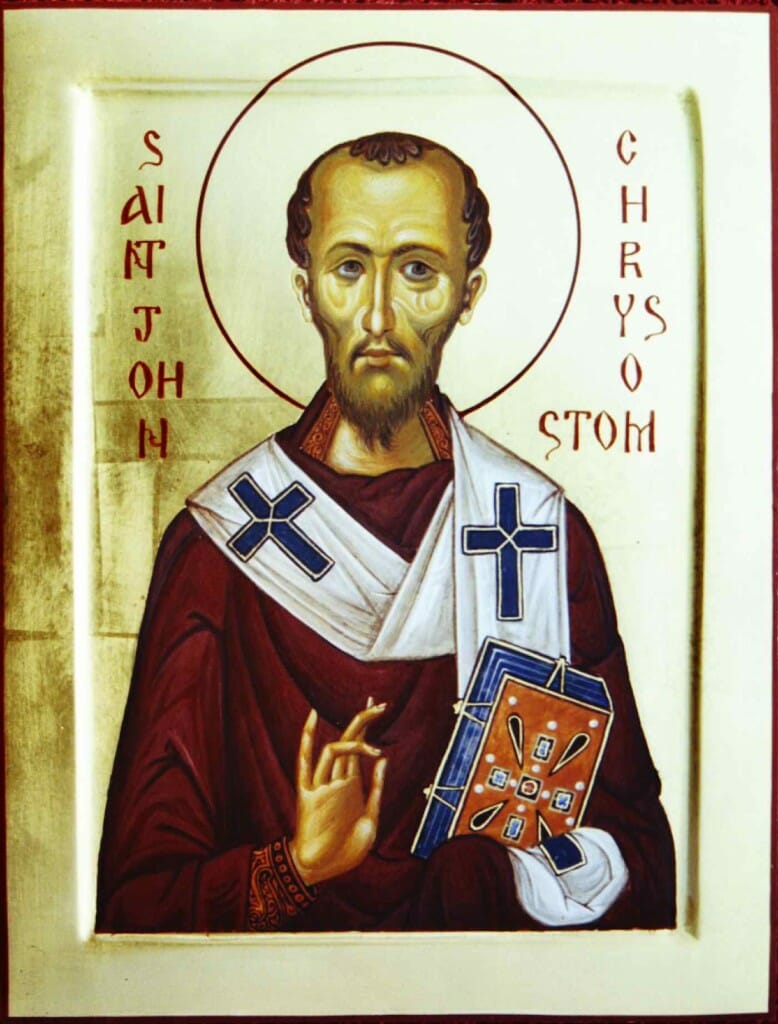

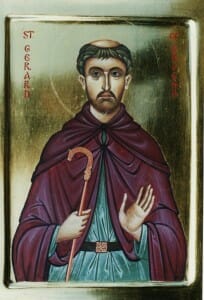
[…] Nov 26th 8:00 amclick to expand…Designing Icons (pt.3): New Icons https://orthodoxartsjournal.org/designing-icons-pt-3-new-icons/Monday, Nov 26th 7:00 amclick to expand…IOCC Responds To Humanitarian Needs Of Gaza Families […]
[…] is part 4 of a series. Part 1, Part 2 , Part 3 (In this section, Aidan give us gives us advice on researching and designing festal […]